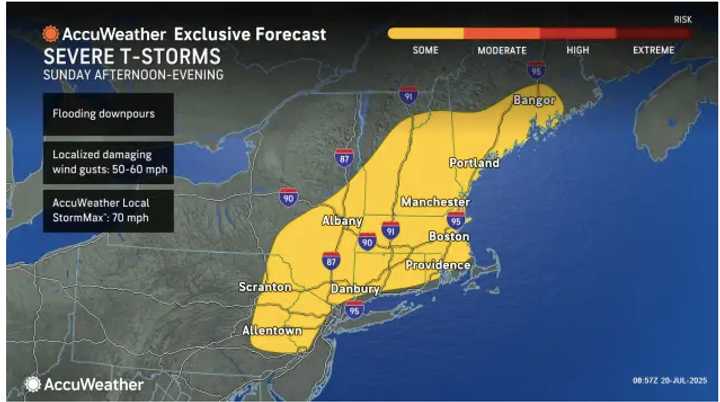Federal Reserve Bank of Boston reports depict a stagnant regional economy that is lagging behind the U.S. economy in some areas, but is cautiously optimistic about the future.
Tariffs, economic uncertainty, AI, and rising housing prices have all had a significant impact on the region and Rhode Island’s economy, according to the Boston Fed reports.
The Boston Fed measures the state of the New England economy in its New England Economic Conditions Report (July 10), its Beige Book (July 16), and monthly economic update by state (January 3). The economic conditions report and the Beige Book primarily report conditions from May 2024 to May 2025.
Rhode Island leads the region and ranks fifth highest in the nation in unemployment, at 4.9 percent, according to the Federal Reserve’s New England Economic Conditions report. The unemployment rate for the region and the nation was 4.2 percent, according to the report.
The Beige Book is published eight times a year and is based on interviews with key business contacts, economists, market experts, and other sources. Overall, it found “economic activity … roughly flat,” with sales declining as consumers “rein in spending on certain fronts, and tourism revenues down slightly. Home sales, the Boston Fed said, rose modestly.
“Prices increased modestly on average, although tariffs led to moderate-to-large price increases in a few cases,” the Beige Book said. “Employment increased slightly, and wages and growth were modest. The outlook was mostly stable and cautiously optimistic on balance.”
Here are some of the observations:
- Employment uncertainty centered on manufacturing and information technology service firms. Some business owners struggled to find enough workers as the “foreign-born labor supply was down in some areas.” Some employers turned to AI to increase worker productivity. – Beige Book.
- Tourism revenue was down with “a significant slowdown in visits from Canada. The expectation is for tourist visits from Canada to “remain well below normal,” with northern New England bearing the brunt. – Beige Book.
- Educational and healthcare led employment growth both in New England and nationally, but New England growth as 1.5 percent, less than half the national employment growth in those areas, which was 3.4 percent. Meanwhile, manufacturing, lost 1.7 percent compared to the U.S. at a loss of 0.7 percent – The Economic Conditions report.
- The regional unemployment rate was 4.2 percent, equal to national unemployment. Rhode Island’s rate was the highest in the region at 4.9 percent, which was also the fifth highest nationally. The U.S. unemployment rate was reported at 4.1 percent in June. — The Economic Conditions report.
- Personal income grew slower in New England than in the nation, over the one-year period in the first quarter of 2025. Wage and salaries increased 2 percent in New England from the first quarter of 2024 to the first quarter of 2025. Nationally, the increase was 4.2 percent. — The Economic Conditions report.
- Inflation. Consumer Price Indes was 2.8 percent in May, higher than the national rate of 2.4 percent. — The Economic Conditions report.
More from What’sUpNewp
Unseen and Unsheltered: The rising crisis of homelessness among Rhode Island’s older adults
Over 1,300 runners celebrate craft beer and fitness at ninth annual Newport Beer Run
Letter to the Editor: Birthing Center closure could trigger community decline
Morning Notes: 281 swimmers tackle two-mile Save The Bay Swim
Something went wrong. Please refresh the page and/or try again.











